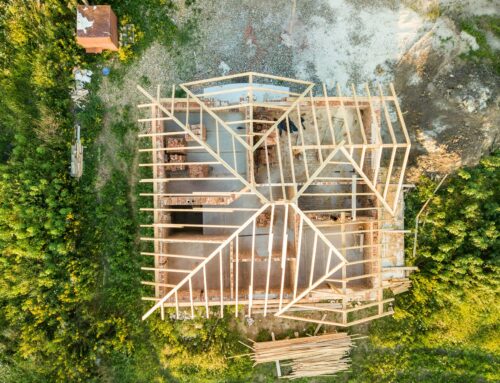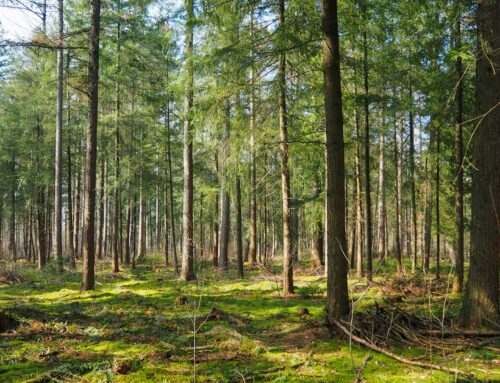A thriving, attractive landscape can significantly enhance the value and appeal of a property, but proper tree care and management are crucial in achieving this goal. Preventing tree damage, maintaining a healthy landscape, and addressing issues promptly can save time, effort, and money in the long run. JNP Tree Removal, LLC, a trusted tree service provider based in Bridgeport, Connecticut, specializes in removing hazardous, dead, and fallen trees. Serving Fairfield and New Haven County residents for over eight years, our team takes pride in offering reliable tree removal, stump grinding, and seasonal cleanup services to guide you on optimal tree care and landscape management.
In this blog post, we will explore various tree care tips designed to prevent tree damage, promote safety, and maintain a healthy landscape. Whether you’re a new homeowner or a seasoned green thumb, these informative guidelines will offer valuable insight into tree care best practices that can enhance your property’s appeal and value. With JNP Tree Removal, LLC as your trusted partner in tree maintenance and management, you can feel confident in nurturing a safe, vibrant, and well-maintained outdoor space for years to come.
1. Choose the Right Trees and Planting Locations
Selecting the appropriate trees and planting locations is a critical first step in ensuring their long-term health and minimizing potential damage. Consider the following factors when selecting and situating trees:
– Growth potential: Research the mature size of a tree to ensure ample space for its roots, branches, and overall growth, minimizing the risk of overcrowding or structural damage.
– Sunlight requirements: Different tree species have varying sunlight needs; ensure your chosen location provides the appropriate amount of light for the tree’s optimal growth and development.
– Soil conditions: Soil acidity, nutrient levels, and drainage all impact tree health; select tree species compatible with your property’s soil conditions and amend soil, if necessary, to support tree development.
– Proximity to structures: Plant trees at a safe distance from buildings, utility lines, and other structures to prevent damage and the need for excessive pruning in the future.
2. Regularly Inspect and Monitor Tree Health
Routine tree inspections and monitoring play a pivotal role in preventing tree damage and maintaining a healthy landscape. Adopt the following practices to proactively identify and address potential issues:
– Seasonal inspections: Inspect your trees at least once per season, paying particular attention to changes in bark, leaves, and overall growth. Significant changes can signal potential health problems or even hazards.
– Pest and disease management: Regularly check your trees for signs of pest infestations or diseases, addressing issues early to prevent further damage or the spread of illness to other trees in your landscape.
– Target-pruning: Remove dead, diseased, or broken branches to improve tree health, prevent the spread of disease, and minimize the risk of falling limbs causing damage or injury.
3. Implement Proper Watering, Mulching, and Fertilizing Techniques
Maintaining optimal growing conditions is essential for tree health and preventing damage. Incorporate the following practices to support healthy tree development:
– Watering: Provide newly planted trees with adequate water to establish healthy root systems. As trees mature, adjust watering practices to account for their changing needs—deep, infrequent watering is generally more effective than shallow, frequent irrigation.
– Mulching: Apply a layer of organic mulch around the base of your trees to help retain soil moisture, regulate temperature, and suppress weeds. Be cautious not to over-mulch or pile mulch directly against the tree trunk, as this can cause decay or infestation.
– Fertilizing: Test your soil and apply fertilizer as needed to create nutrient-rich conditions that promote tree growth and health. Proper fertilization helps prevent nutrient deficiencies and potential damage caused by weakened structural development.
4. Seek Professional Assistance for Tree Removal and Stump Grinding
Despite your best efforts, there may come a time when tree removal or stump grinding is necessary due to disease, damage, or safety concerns. Enlisting professional help for these tasks carries several advantages:
– Expert assessment: Skilled professionals can accurately assess your landscape, identifying dead or unsafe trees that require removal and offering guidance on necessary preventative measures.
– Safe tree removal: An experienced team has the tools, knowledge, and experience to remove trees safely, preventing property damage or personal injury.
– Efficient stump grinding: Professional stump grinding services ensure the swift and thorough elimination of unsightly or hazardous tree stumps, preparing the area for new plantings or landscaping projects.
By partnering with a reliable tree service provider like JNP Tree Removal, LLC, you can protect the health and value of your landscape, regardless of the challenges you face in tree care, removal, or stump grinding.
Conclusion
Proper tree care is an essential aspect of creating and maintaining a safe, healthy, and beautiful landscape. By selecting and planting the right trees, incorporating regular inspection practices, providing optimal growing conditions, and engaging professional CT tree services when necessary, you can significantly reduce the risk of tree damage and nurture a vibrant outdoor space for years to come. Trust JNP Tree Removal, LLC to support your property’s tree care needs, from removal and stump grinding to expert guidance on maintaining a thriving landscape. Together, we can cultivate a happy and healthy outdoor environment for all to enjoy.




